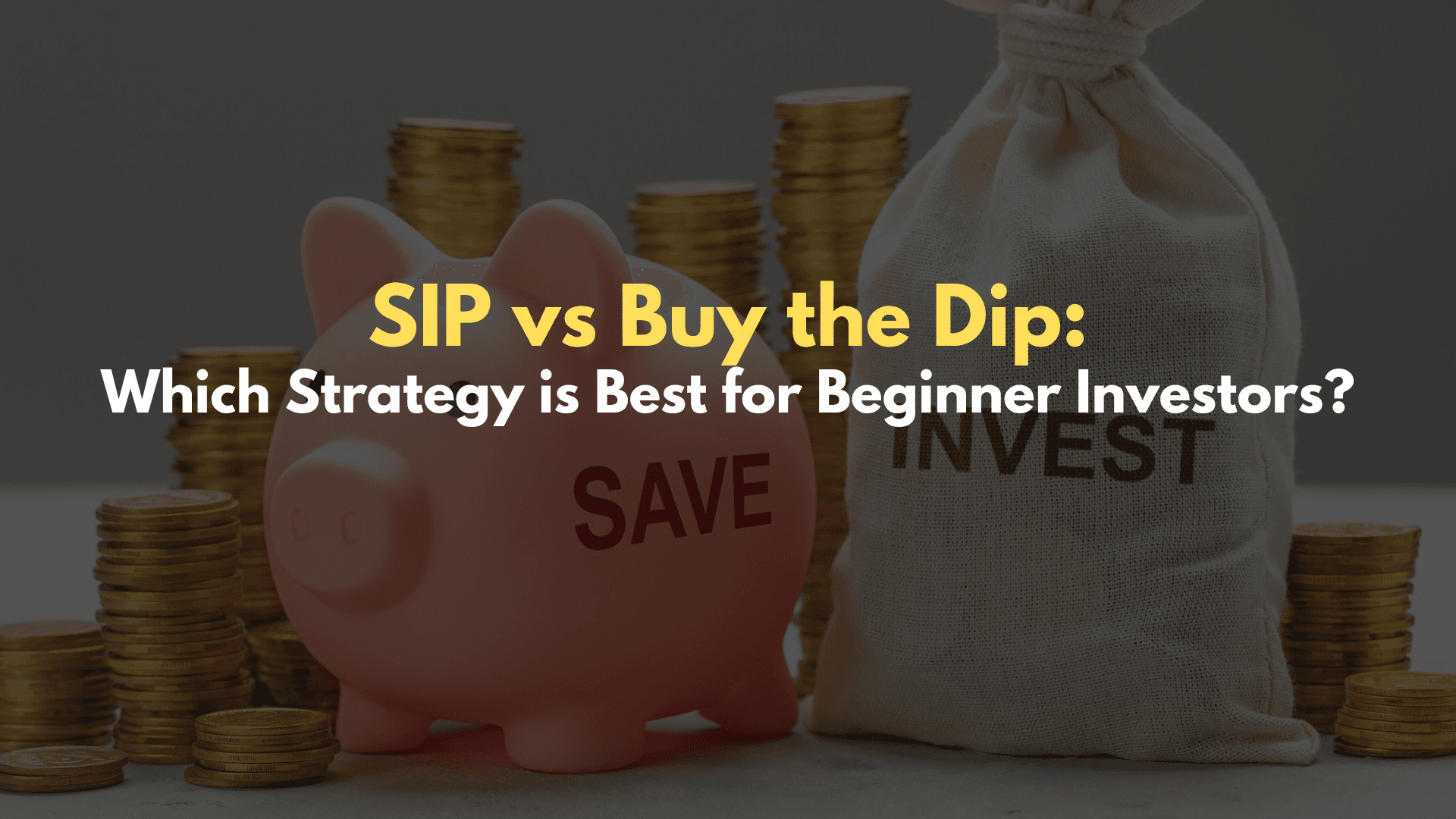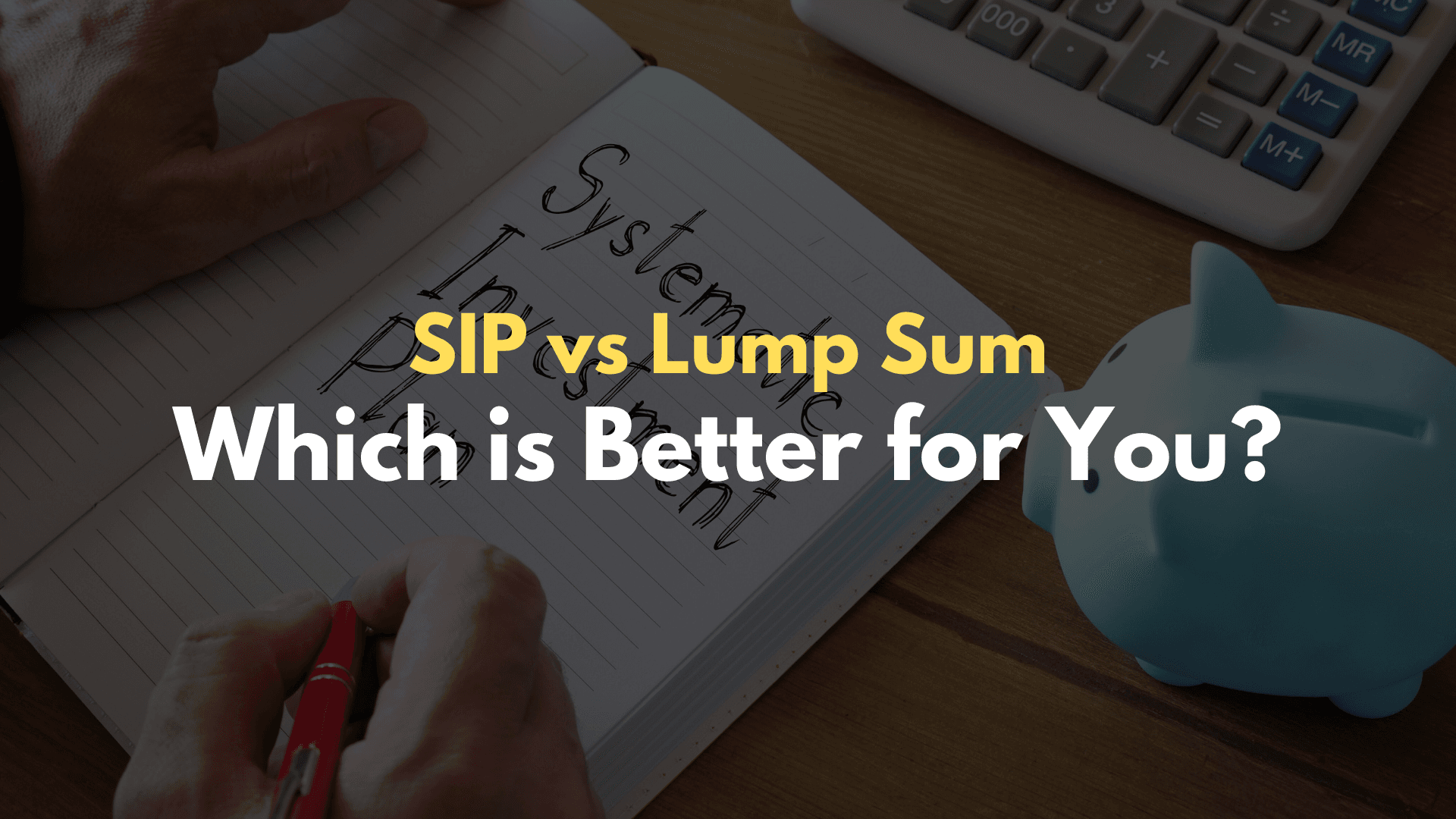SIP vs Buy the Dip: Which Strategy is Best for Beginner Investors?
Investing in the stock market can be overwhelming, especially for beginners who are just starting to build their portfolios. Two popular strategies that often come up in investment discussions are SIP (Systematic Investment Plan) and Buy the Dip. But which one is best for a beginner? Let’s explore both strategies and their pros and cons to determine which might be the right choice for you as you embark on your investment journey.
What is SIP (Systematic Investment Plan)?
A Systematic Investment Plan (SIP) is a disciplined way of investing in mutual funds. With SIP, you invest a fixed amount of money at regular intervals (monthly, quarterly, etc.), regardless of the market conditions. This strategy promotes long-term investing and removes the emotional aspect of investing since it encourages consistent contributions to your portfolio over time.
How SIP Works:
- You choose a mutual fund.
- Set a fixed amount to invest (e.g., ₹500, ₹1,000, ₹5,000).
- Invest this fixed amount at regular intervals, no matter what the market conditions are.
- Your investment grows with the market over time, benefiting from the power of compounding.
What is Buy the Dip?
The “Buy the Dip” strategy refers to purchasing assets (such as stocks, ETFs, or mutual funds) when their prices have fallen after a period of growth. The idea behind this strategy is that market dips are short-term and provide an opportunity to buy assets at a lower price before they recover.
How Buy the Dip Works:
- You monitor the markets for a drop in prices.
- When an asset’s price falls (due to market correction or negative news), you buy the asset in hopes of benefiting from the price rebound when the market recovers.
- The goal is to buy low and sell high.
SIP vs Buy the Dip: A Comparison
1. Risk Management
SIP: SIP mitigates the risk of market volatility by spreading your investments over time. Since you’re investing a fixed amount at regular intervals, you’re not timing the market, which reduces the chance of making poor decisions based on emotions or short-term market fluctuations.
Buy the Dip: This strategy can be riskier because it requires you to time the market. Predicting market dips and recovery cycles is extremely challenging, and if you’re wrong, you might buy an asset at a price that doesn’t recover as quickly as expected, or worse, continues to fall.
Winner: SIP (because it’s more suitable for beginners who are risk-averse and not skilled at market timing)
2. Time and Effort Involved
SIP: SIP is an automated process. Once you’ve set up your SIP, it requires little to no monitoring. It’s a passive investment strategy that doesn’t need constant attention, which is ideal for beginners who may not have the time or knowledge to track the market daily.
Buy the Dip: Buying the dip requires you to stay active and monitor the market closely. You’ll need to be able to recognize dips and make timely decisions about when to buy and when to sell. This requires more research, analysis, and market awareness.
Winner: SIP (for beginners who want a more hands-off approach)
3. Long-Term Growth vs Short-Term Gains
SIP: SIP is a long-term strategy that benefits from the power of compounding. Over time, regular investments allow your money to grow steadily. The focus is not on short-term gains but on building wealth over many years or decades.
Buy the Dip: The buy-the-dip strategy focuses on short-term market movements and the potential for quick profits. It’s more about capitalizing on market corrections or moments of volatility. However, this could be more unpredictable, and short-term gains are never guaranteed.
Winner: SIP (for those looking for steady long-term growth)
4. Emotional Control
SIP: Because SIP is a systematic, fixed-amount strategy, it removes the emotional aspect of investing. You don’t need to worry about when the market will go up or down, as you are investing consistently regardless of market conditions. This strategy is especially valuable for beginners who might otherwise panic during market volatility.
Buy the Dip: The buy-the-dip strategy can be emotionally challenging, as it requires you to buy when prices are low, and it’s easy to let fear or uncertainty influence your decisions. If you panic during a dip, you may miss out on the opportunity to buy or even sell too early.
Winner: SIP (for those struggling with emotional decision-making)
Which Strategy is Best for a Beginner?
For beginners, SIP is often the better choice. It provides a low-risk, hands-off way to start investing. It encourages consistency and long-term thinking, which are essential for growing wealth over time. SIP also removes the need for market timing, which can be stressful and difficult for new investors.
While Buy the Dip might sound appealing for its potential for short-term gains, it requires a deep understanding of market trends and the ability to manage emotions. For a beginner without the time, experience, or resources to actively monitor the markets, SIP provides a safer, more reliable route to long-term financial success.
Conclusion: SIP for Steady Success
In summary, both SIP and Buy the Dip have their advantages, but for a beginner investor, SIP is likely the best strategy. It offers a disciplined, less stressful, and more predictable path to building wealth over time. As you gain more experience and become comfortable with market fluctuations, you can explore more advanced strategies like Buy the Dip. But for now, starting with SIP is a wise choice for securing your financial future with minimal risk and effort.
Happy investing!











Post Comment